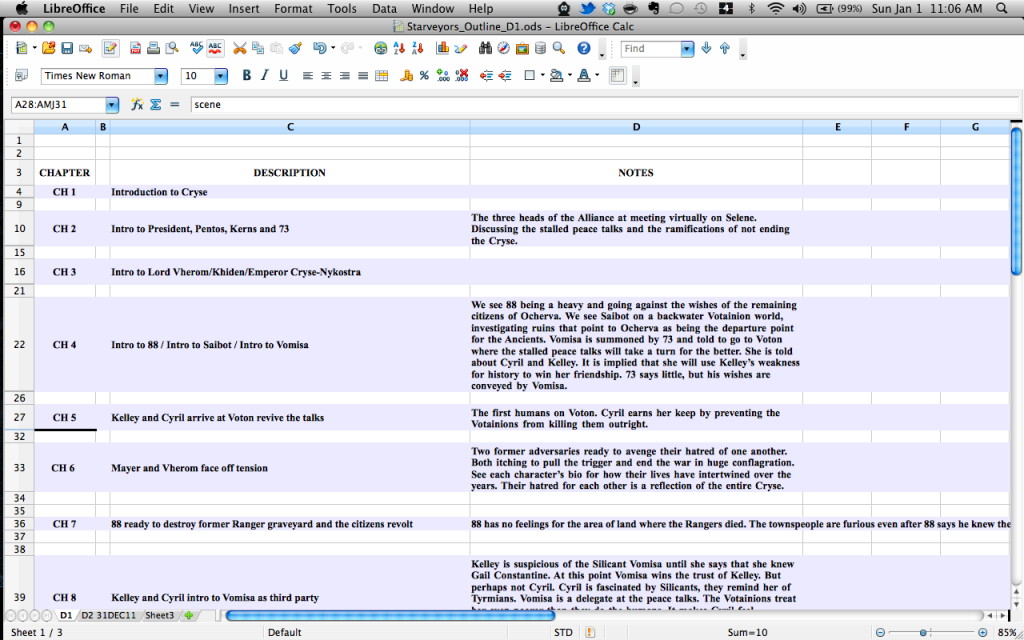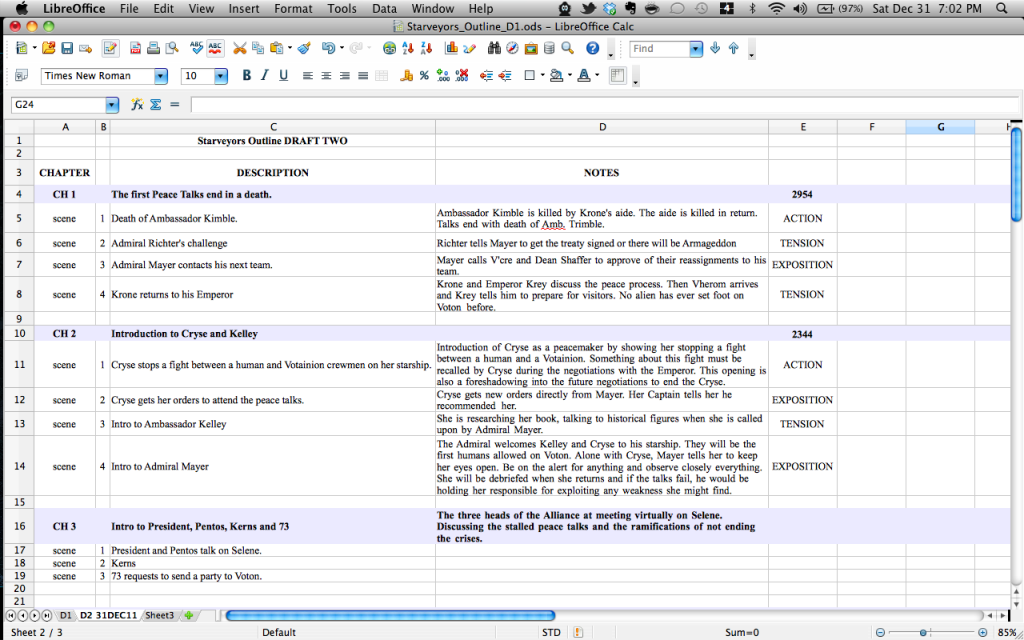[*** DISCLAIMER: THIS POST HAS SPOILERS FOR MY NEXT NOVEL. STOP READING NOW IF YOU WANT TO BE SURPRISED ***]
This is a continuing series of posts about the writing of my novel, Starveyors. You can start at the beginning and catch up at your own pace, or just read on and try to figure it all out on your own. There’s a link list for these posts on the blog’s sidebar to your right.
Novel Outline
The one go-to tool that I have as a novel writer is my outline. I use a spreadsheet for my outline. If you’d rather use Word or Scrivener, than by all means use them. My outline starts out pretty sparse. It’s just a crude, chapter-by-chapter romp through the story as best as I can make it, following the story engineering concepts as described by Larry Brooks. I than save that outline in its own tab and copy it into a new tab that includes the latest date it was modified as part of the title.

I dothis to have a saved and handy first draft of the story. Because as I write, the outline changes and morphs into what will become the final story. That initial version does not include individual scenes. But subsequent versions do have the scenes added. Before I start writing a chapter, I fill in what I hope to include as far as scenes. Sometimes I stick to that plan, other times I modify it, which is why the outline is considered a living document. I rarely change the big picture order of events, but the scene level stuff and sometimes the chapters themselves are subject to reordering and completely new approaches.
The screenshot above shows the second draft of the outline with the first two chapters fleshed out with scene data and some meta data about flow and word counts. I’ve added the scenes and given a brief description of them along with a more detailed set of notes about the action. One more set of meta data that I need to add is a timeline. How many days between each chapter and or scene needs to be recorded.
Sometimes, how many days or hours occur between scenes is critical and needs to be tracked. In Space Opera, you can jump all around a galaxy and from one time period to another or even change dimensions. All of that can get very confusing for the reader especially if the writer is also confused. So pay attention to it now to avoid costly rewrites later.
I always have my outline open and ready to update, as I finish a scene or a chapter. Otherwise I’ll get lazy and it will not get updated. Ideally, after the novel is finished, you will have a scene-by-scene, chapter-by-chapter breakdown of the whole book. This can help you write your synopsis when you are ready to submit it to agents or publishers.
